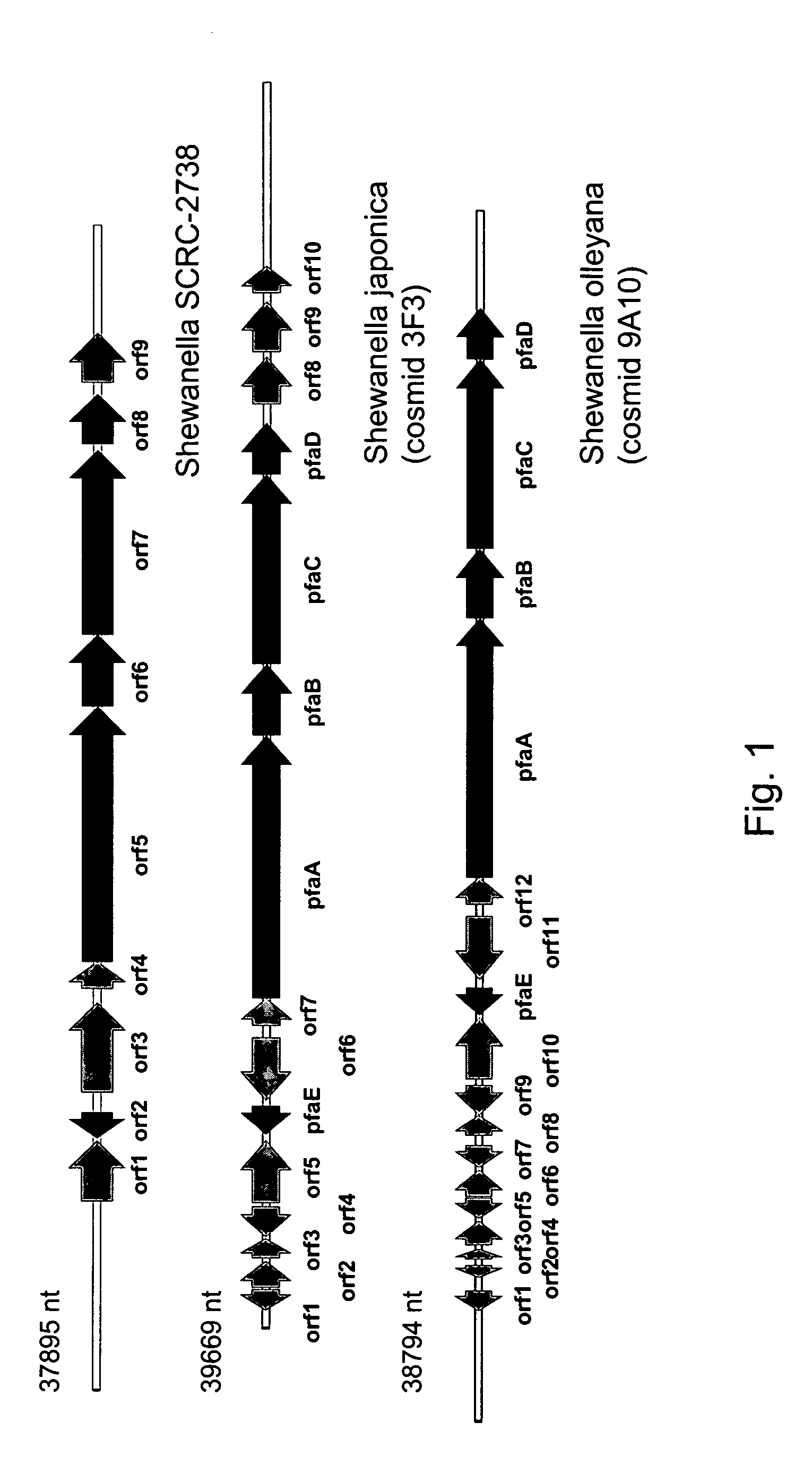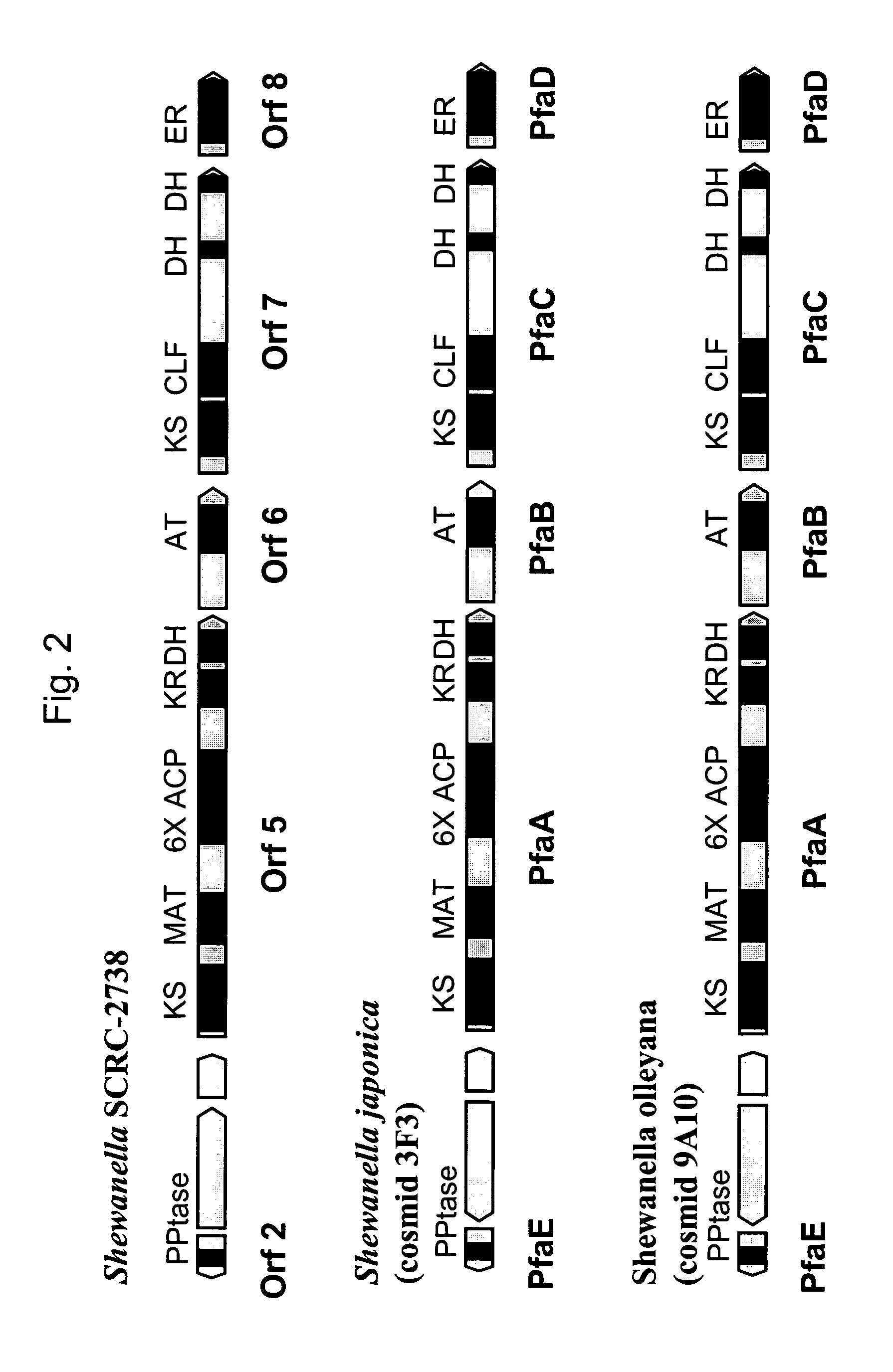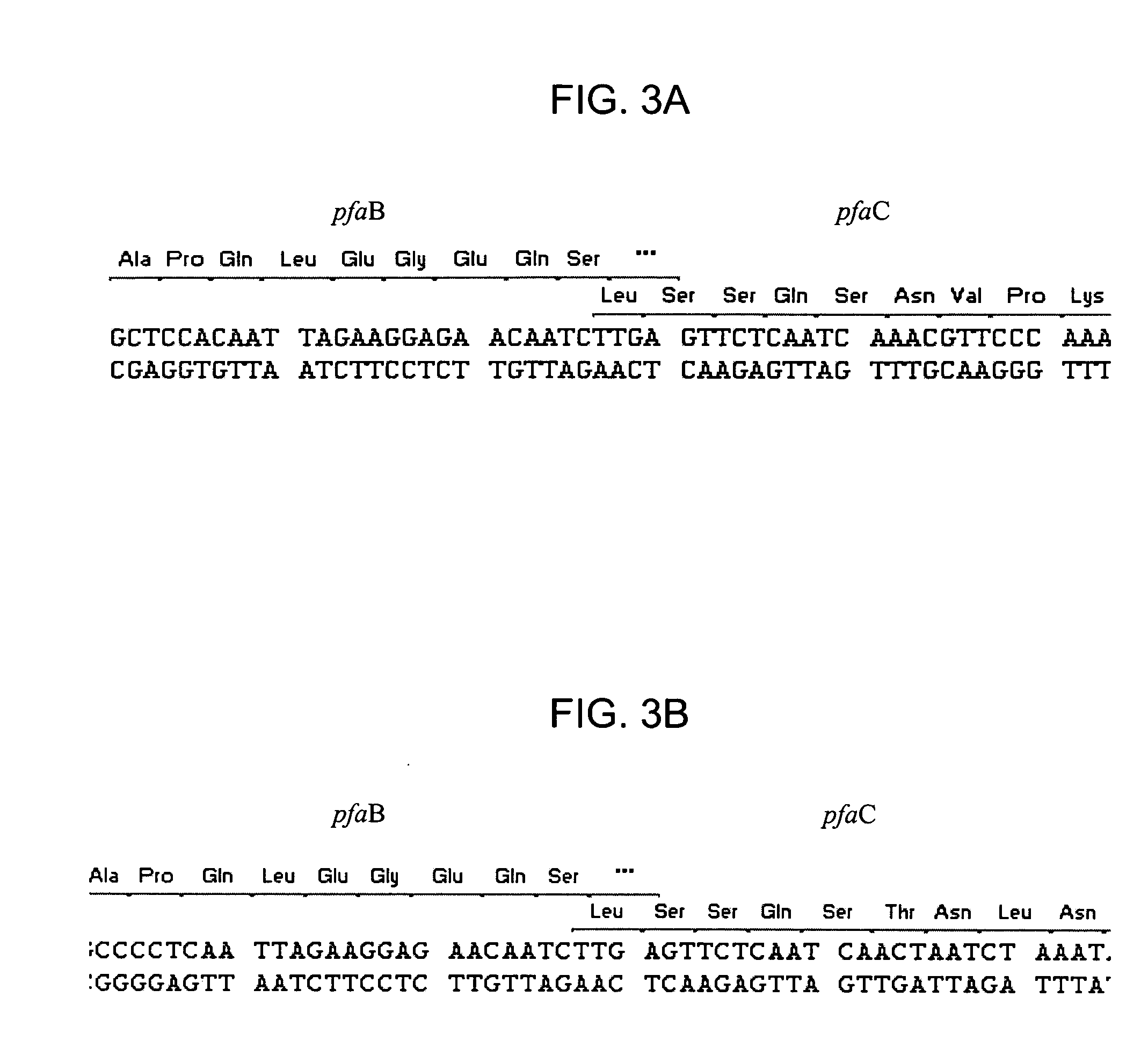PUFA polyketide synthase systems and uses thereof
- Summary
- Abstract
- Description
- Claims
- Application Information
AI Technical Summary
Benefits of technology
Problems solved by technology
Method used
Image
Examples
example 1
[0271] The following example shows that certain EPA-producing bacteria contain PUFA PKS-like genes that appear to be suitable for modification of Schizochytrium.
[0272] Two EPA-producing marine bacterial strains of the genus Shewanella have been shown to grow at temperatures typical of Schizochytrium fermentations and to possess PUFA PKS-like genes. Shewanella olleyana (Australian Collection of Antarctic Microorganisms (ACAM) strain number 644; Skerratt et al., Int. J. Syst. Evol. Microbiol 52, 2101 (2002)) produces EPA and grows up to 25-30° C. Shewanella japonica (American Type Culture Collection (ATCC) strain number BAA-316; Ivanova et al., Int. J. Syst. Evol. Microbiol. 51, 1027 (2001)) produces EPA and grows up to 30-35° C.
[0273] To identify and isolate the PUFA-PKS genes from these bacterial strains, degenerate PCR primer pairs for the KS-MAT region of bacterial orf5 / pfaA genes and the DH-DH region of bacterial orf7 / pfaC genes were designed based on published gene sequences f...
example 2
[0284] The following example demonstrates the generation, identification, sequencing and analysis of DNA clones encoding the complete PUFA PKS systems from Shewanella japonica and Shewanella olleyana.
[0285]Shewanella japonica and Shewanella olleyana recombinant libraries, consisting of large genomic DNA fragments (approximately 40 kB), were generated by standard methods in the cosmid vector Supercos-1 (Stratagene). The cosmid libraries were screened by standard colony hybridization procedures. The Sh. olleyana cosmid library was screened using two separate digoxigenin-labeled probes. Each probe contained a fragment of DNA homologous to a segment of EPA biosynthetic gene clusters described in Example 1 above and respectively represent both ends of the clusters. These probes were generated by PCR using Sh. olleyana DNA as a template and primers prRZ23 (SEQ ID NO:25) and prRZ24 (SEQ ID NO:26) for one probe and prRZ28 (SEQ ID NO:27) and prRZ29 (SEQ ID NO:28) for a second probe. Example...
example 3
[0298] The following example demonstrates that Schizochytrium Orfs A, B and C encode a functional DHA / DPA synthesis enzyme via functional expression in E. coli.
[0299] General Preparation of E. coli Transformants
[0300] The three genes encoding the Schizochytrium PUFA PKS system that produce DHA and DPA (Orfs A, B & C; SEQ ID NO:13, SEQ ID NO:15 and SEQ ID NO:17, respectively) were cloned into a single E. coli expression vector (derived from pET21c (Novagen)). The genes are transcribed as a single message (by the T7 RNA-polymerase), and a ribosome-binding site cloned in front of each of the genes initiates translation. Modification of the Orf B coding sequence was needed to obtain production of a full-length Orf B protein in E. coli (see below). An accessory gene, encoding a PPTase (see below) was cloned into a second plasmid (derived from pACYC184, New England Biolabs).
[0301] The Orf B gene is predicted to encode a protein with a mass of ˜224 kDa. Initial attempts at expression of...
PUM
| Property | Measurement | Unit |
|---|---|---|
| Temperature | aaaaa | aaaaa |
| Length | aaaaa | aaaaa |
| Fraction | aaaaa | aaaaa |
Abstract
Description
Claims
Application Information
 Login to View More
Login to View More - R&D
- Intellectual Property
- Life Sciences
- Materials
- Tech Scout
- Unparalleled Data Quality
- Higher Quality Content
- 60% Fewer Hallucinations
Browse by: Latest US Patents, China's latest patents, Technical Efficacy Thesaurus, Application Domain, Technology Topic, Popular Technical Reports.
© 2025 PatSnap. All rights reserved.Legal|Privacy policy|Modern Slavery Act Transparency Statement|Sitemap|About US| Contact US: help@patsnap.com



